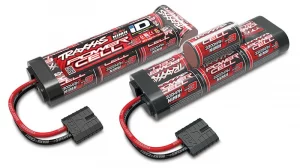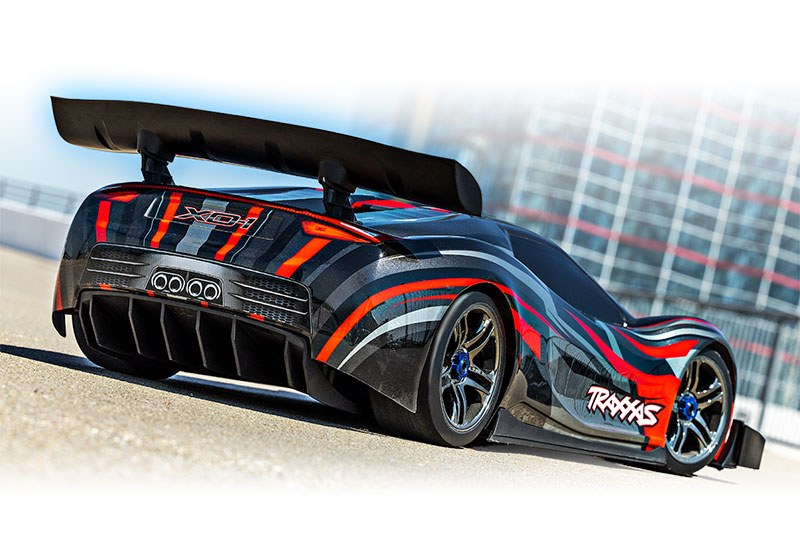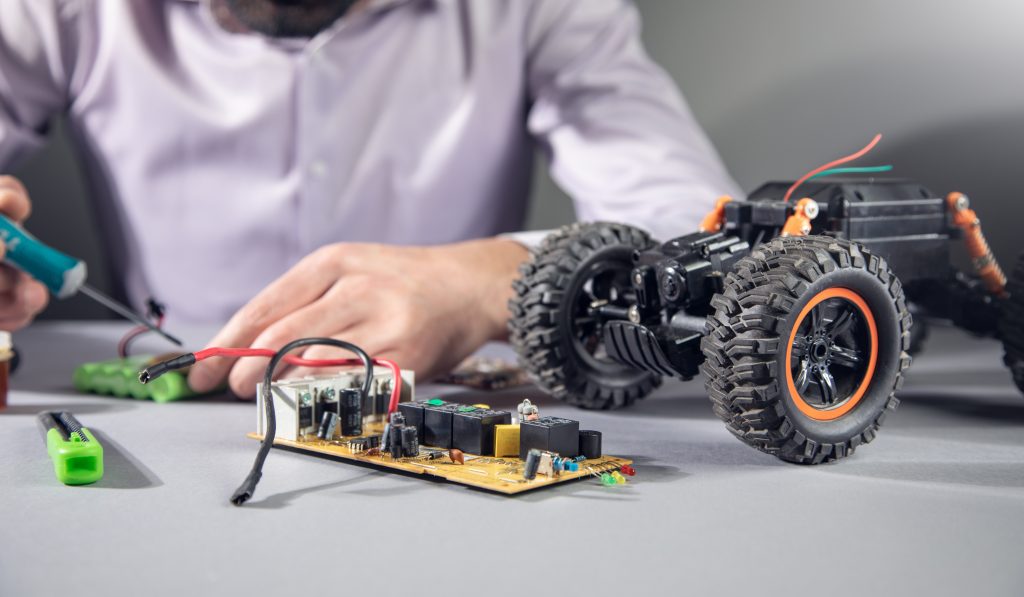When it comes to radio-controlled cars, there are two main types: electric and gas. Both have their own advantages and disadvantages, which means that one type may be better for you than the other. In this blog post, we will discuss the pros and cons of both types of cars, so that you can make an informed decision about which one is right for you!

Is an Electric RC best?
Electric RC cars are powered by batteries, which means that they are much more environmentally friendly than gas cars. They are also typically cheaper to operate since you only have to recharge the batteries instead of buying new ones.
Electric cars also tend to be lighter than gas cars, which can be an advantage if you are racing them. They run on brushless motors, with some motors being able to produce more than 200 MPH!
You will most definitely need 4 or 5 battery packs to take with you as they do tend to only last for approx 10 mins of continual usage before losing charge and becoming less effective.

An electric RC car can also have a lot more moving parts, with this comes the chance of having more things to break! Replacement parts are generally affordable though and repairs can be done by the owner.
Because there is no engine, electric RC cars just require a battery to be plugged in and they are ready to go, no tuning or engine cranking is required. This is a major positive as getting a nitro car to start in cold conditions can be quite a task!
What’s the fastest electric car?
Currently, the fastest electric car is made by Traxxas and they call it the XO-1. It can reach a top speed of over 100 MPH in just under 5 seconds! The XO-1 is made to be aerodynamically perfect for great handling at these breakneck speeds and has a floor clearance of just 0.59 mm.

The Traxxas XO-1 is a 1/7 scale car, powered by the Traxxas Big Block Motor and has built-in Traxxas stability management control.
There are faster cars out there, but the Traxxas XO-1 is the fastest off-the-shelf electric RC car available.
Should I buy a gas-powered RC car?
If you are looking for an RC car that is more rugged, and powerful and will provide you with hours of entertainment then a gas-powered car is the way to go. Just be aware that they require more maintenance than electric cars and can be quite tricky to start in cold weather!
Gas-powered cars are a whole lot of fun but can also be a pain as you will need to make sure that you spend some time after use cleaning and greasing parts.
Due to the fact a gas-powered RC car uses nitro as fuel, you will find that there will be residue and oil in and around your car. If you don’t maintain your car properly you will start to notice corrosion on internal parts.
A gas RC car can be a little more expensive when looking at replacing parts and you may need a professional to take apart the engine if you start to get problems.
That being said, gas-powered RC cars are renowned for being more rugged, tougher cars and can withstand a lot!
They tend to have more robust parts, like shockers, anti-roll bars, suspension arms and other parts made from alloy. This is because they are typically heavier than electric-powered RC cars and so require a more heavy-duty build.
Gas-powered Rc cars are slower than electric cars because the maximum the engine can produce depends on the torque and like life-size engines a particular size can only produce a finite amount. Typically a gas-powered RC car can go at a maximum speed of approx 50 MPH, which is still very considerable.
RC Trucks are more likely to be gas-powered due to the fact that trucks are used for offroading and require higher torque to traverse steep terrain and uneven surfaces. An RC truck is an excellent way of having a lot of fun and takes the worry out of getting the odd bash.
What size RC cars are there?
There are three main sizes of RC cars: micro, mini, and full-size. Micro RC cars are the smallest of the bunch and usually, measure between four and seven inches long. These cars are perfect for indoor use or racing in smaller outdoor areas.
Mini RC cars are slightly larger than micros, measuring between eight and twelve inches long. These cars can be used indoors or outdoors and offer a bit more speed and power than micros. Full-size RC cars are the largest type of RC car, measuring thirteen inches or longer. These cars are best suited for outdoor use on large tracks or in open spaces.
There is also a fourth category of RC cars known as “scale” vehicles. Scale vehicles are designed to closely resemble real-life cars, trucks, and other vehicles. The scale is typically between one and five, with one being the smallest and five being the largest. Scale RC cars are usually larger than micros and mini RC cars, making them better suited for outdoor use.
What upgrades are available for RC cars?
There are a number of different upgrades you can do to your RC car, including things like tyres, suspension, servos, wishbones etc.
One of the most popular upgrades is to change the tyres. There are a number of different types of tyres available, each with its own benefits and drawbacks. For example, slick tyres are great for high-speed racing on smooth surfaces, but they provide little grip in wet or muddy conditions. Conversely, treaded tyres offer more grip in off-road conditions but can be slower on paved surfaces.

Another popular upgrade is to change the suspension. Suspension helps to improve the handling of your RC car by absorbing shocks and keeping the wheels in contact with the ground. There are a number of different types of suspension available, including coil overs, shocks and springs.
Finally, another popular upgrade is to change the servos. Servos are responsible for controlling the steering and throttle of your RC car. There are a number of different types of servos available, each with its own benefits and drawbacks. For example, digital servos are more precise than analogue servos but can be more expensive.
These are just a few of the most popular upgrades available for RC cars. By upgrading your RC car, you can improve its performance and make it better suited to your specific needs. So whether you’re looking to race on paved surfaces or tackle tough off-road conditions, there’s an upgrade out there that can help you achieve your goals.
If you’re new to the world of RC car upgrades, why not start with something simple like a set of new tyres or a different type of suspension? Once you’ve got a taste for what’s possible, you can start exploring more advanced options like servo upgrades and wishbone replacements. Whichever route you take, one thing is for sure – upgrading your RC car can be a lot of fun!
Conclusion
So, which is better – electric or nitro RC cars? The answer, of course, is that it depends on your own personal preferences. If you’re looking for convenience and low maintenance, an electric car is probably the way to go. But if you want to experience the thrill of high-powered performance, a nitro car might be more up your street. Whichever type of RC car you choose, we hope you have lots of fun with it!
I am a massive fan of anything that is remote controlled. This stems from my childhood when my Grandfather would take me to a local RC flying club and I would dream about having my own RC models someday.
